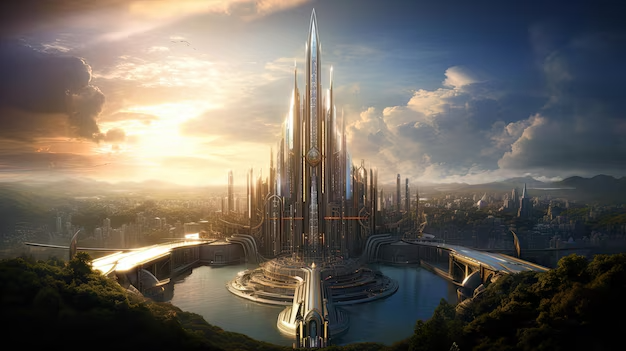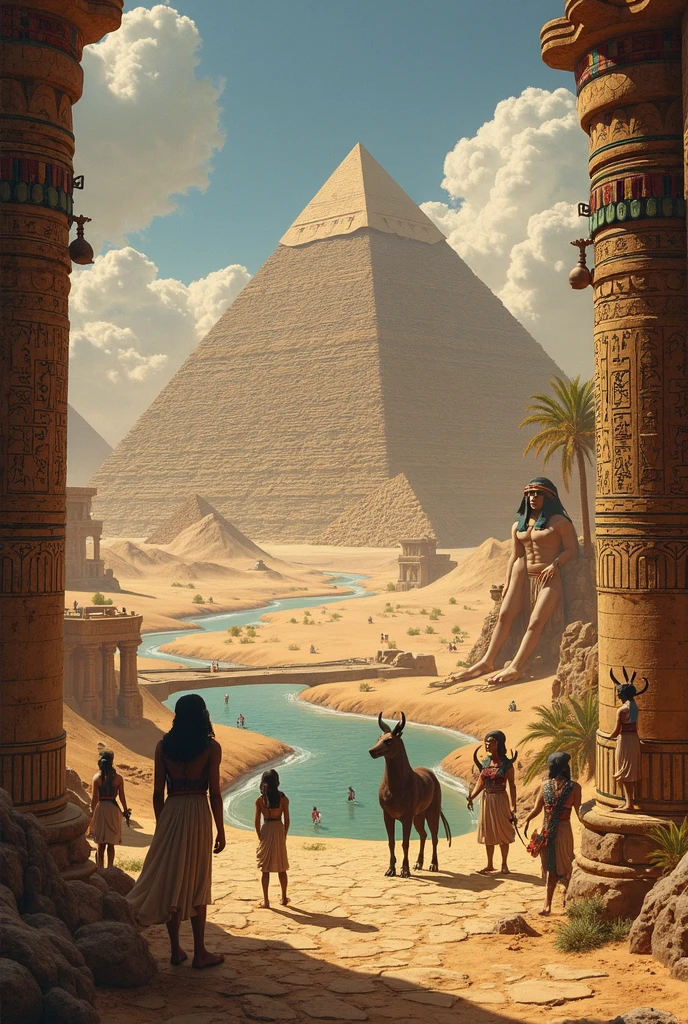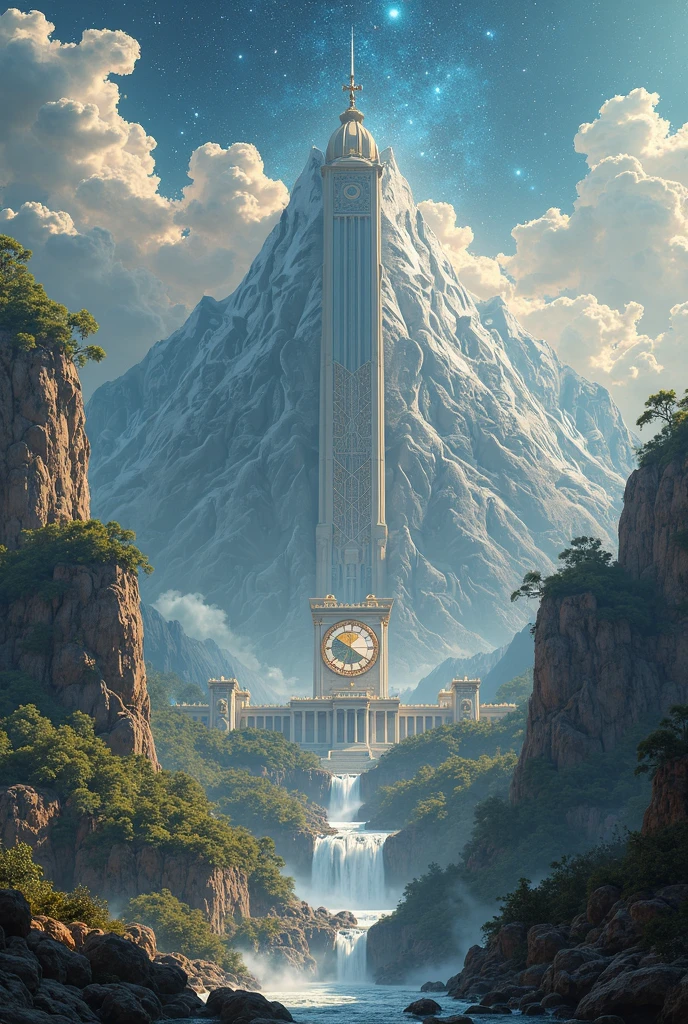Canaanite Mythology: The Pantheon of Ancient Ugarit
The mythology of the ancient Canaanites, particularly from the city of Ugarit, offers a fascinating glimpse into the religious beliefs of the Levant. Central to these myths is the supreme god El, alongside other deities like Yam, Mot, and Anat. These stories, often involving cosmic battles and sacred toros, reveal a complex worldview that influenced neighboring cultures.
The Supreme God: El
El was the chief deity in Canaanite mythology, often depicted as a wise and benevolent father figure. His name translates to “God,” and he was considered the creator of the universe. Unlike the storm gods common in other pantheons, El ruled with a calm authority, residing on a sacred mountain.
- El was associated with wisdom and justice.
- He was often called “Father of Years” due to his eternal nature.
- His consort was Asherah, the mother goddess.
El’s Role in Ugaritic Texts
The texts from Ugarit describe El as a mediator among the gods, especially in conflicts involving Yam (the sea god) and Mot (the god of death). His decisions were final, and even powerful gods like Baal sought his approval.
| Deity | Domain | Relation to El |
|---|---|---|
| El | Supreme God | Ruler of the Pantheon |
| Yam | Sea | Sometimes opposed by El |
| Mot | Death | Challenged El’s authority |
The Chaotic Sea God: Yam
Yam, the god of the sea, represented chaos and the untamed waters. In Canaanite myths, he often clashed with Baal, the storm god, for dominance. Despite his destructive nature, El occasionally supported Yam, showcasing the balance between order and chaos.
Yam’s Symbolism
The sea was both feared and revered in Canaanite culture, making Yam a complex figure. His battles with Baal symbolized the struggle between civilization and nature.
The God of Death: Mot
Mot, whose name means “Death,” was a fearsome deity who ruled the underworld. He was a direct adversary of Baal, whom he famously swallowed, leading to a temporary end of fertility on earth. El mourned Baal’s death, showing the interconnectedness of life and death in Canaanite belief.
- Mot was associated with drought and famine.
- His defeat by Anat (Baal’s sister) restored balance.
The Warrior Goddess: Anat
Anat was a fierce warrior goddess, often depicted with weapons in hand. She played a crucial role in reviving Baal after his battle with Mot, demonstrating her importance in maintaining cosmic order. Her violent yet protective nature made her a beloved figure in Ugarit.
Anat and the Sacred Toros
One of the most striking symbols in Canaanite mythology was the toros (bull), representing strength and fertility. Anat was sometimes depicted alongside these beasts, emphasizing her power.
| Symbol | Meaning | Associated Deity |
|---|---|---|
| Toros (Bull) | Strength, Fertility | El, Baal, Anat |
| Serpent | Chaos | Yam |
The Legacy of Ugaritic Mythology
The myths of Ugarit provide invaluable insights into Canaanite religion, influencing later cultures like the Phoenicians and Hebrews. The stories of El, Yam, Mot, and Anat reveal a worldview where gods embodied natural forces and human struggles.
For further reading, check out these resources: Britannica on Canaanite Religion, World History on Canaan, and Ancient.eu on Ugarit.
Descubre más artículos como este en nuestra web y síguenos en facebook.com/zatiandrops.
While El was the supreme god, Baal (also known as Hadad) emerged as one of the most dynamic figures in Canaanite religion. As the storm god, he controlled rain, thunder, and fertility—essential elements for an agrarian society. Unlike El‘s passive wisdom, Baal embodied action, often engaging in epic battles to maintain cosmic order.
Baal’s Rise to Power
According to the Ugaritic texts, Baal’s ascension was not peaceful. He had to defeat Yam to claim kingship over the gods, a struggle reflecting humanity’s fear of the untamed sea. His victory symbolized the triumph of order over chaos, earning him El’s reluctant endorsement.
- Baal’s weapon was a magical mace named Driver, which could summon storms.
- His palace was built on Mount Zaphon, a sacred site rivaling El’s mountain.
- He was closely tied to agricultural cycles, with rituals pleading for rain.
Baal and the Cycle of Seasons
The myth of Baal’s death and resurrection—orchestrated by Mot and reversed by Anat—mirrored the dry and wet seasons of the Levant. This cyclical narrative reinforced the Canaanites’ dependence on nature’s rhythms.
| Event | Symbolism | Impact on Canaanite Life |
|---|---|---|
| Baal’s Victory Over Yam | Control of chaotic waters | Safe maritime trade |
| Baal’s Death | Drought | Crop failures |
| Anat’s Resurrection of Baal | Return of rains | Agricultural renewal |
Beyond the major gods, Canaanite mythology featured a host of secondary deities, each governing specific aspects of life. These figures, though less prominent, were vital to daily worship.
Asherah: The Mother Goddess
Asherah, El’s consort, was revered as the goddess of motherhood and fertility. She was often symbolized by sacred poles or trees, which were erected in temples. Unlike Anat’s warlike demeanor, Asherah embodied nurturing and stability.
Asherah’s Controversial Legacy
Evidence suggests Asherah was worshipped alongside Yahweh in early Israelite religion, a practice later condemned by Hebrew prophets. This syncretism highlights the fluid boundaries between Canaanite and neighboring beliefs.
Dagon: God of Grain and Soil
Originally a Philistine deity, Dagon was absorbed into Canaanite lore as a god of agriculture. Temples dedicated to him stored grain, linking his worship to economic survival.
- Dagon’s name derives from the Hebrew word dagan (grain).
- He was sometimes considered Baal’s father, though this varied by region.
The people of Ugarit practiced elaborate rituals to appease their gods. These ceremonies, recorded on clay tablets, included sacrifices, feasts, and dramatic reenactments of myths.
Sacrificial Practices
Animal sacrifices—particularly bulls (toros)—were central to Canaanite worship. The blood and meat were offered to deities, while priests interpreted omens from the entrails.
- Bulls symbolized strength and were sacred to Baal.
- Doves were sacrificed to Asherah for fertility blessings.
The King’s Role in Religion
Ugaritic kings acted as high priests, mediating between gods and humans. Annual festivals, like the New Year celebration, reaffirmed the divine covenant ensuring prosperity.
The myths of Ugarit permeated the ancient Near East, shaping the religious frameworks of the Phoenicians, Hebrews, and even Greeks.
Parallels with Greek Mythology
Scholars note striking similarities between Canaanite and Greek gods:
| Canaanite Deity | Greek Equivalent | Shared Traits |
|---|---|---|
| Baal | Zeus | Storm gods, kingship |
| Yam | Poseidon | Sea deities |
| Anat | Athena | Warrior goddesses |
Hebrew Adaptations
Elements of Canaanite lore appear in the Hebrew Bible, albeit transformed. For example:
- El’s title “Elyon” (Most High) was adopted for Yahweh.
- The struggle between Baal and Mot echoes the Psalms’ imagery of God conquering Death.
Since the 1928 excavation of Ugarit, archaeologists have uncovered thousands of tablets detailing myths, prayers, and administrative records. These findings revolutionized our understanding of Canaanite religion.
Key Ugaritic Texts
The most significant tablets include:
- The Baal Cycle: Describes Baal’s battles with Yam and Mot.
- The Legend of Keret: A king’s quest for divine favor.
- The Epic of Aqhat: A moral tale involving Anat’s vengeance.
Debates Among Scholars
Some researchers argue that Baal was originally a title (“Lord”) for multiple gods, while others view him as a distinct entity. Similarly, El’s decline in later texts sparks theories about shifting power dynamics in the pantheon.
For deeper exploration, consult these resources: The Met’s Ugarit Collection, Journal of Near Eastern Archaeology, and Oxford Reference on Baal.
Descubre más artículos como este en nuestra web y síguenos en facebook.com/zatiandrops.
The Divine Council: Assembly of the Gods
In Canaanite belief, the gods operated within a structured hierarchy known as the Divine Council, where El presided over meetings to deliberate cosmic matters. This council included the bn il (“sons of El”), a group of lesser deities who executed divine will. Texts describe lively debates, such as when Baal petitioned for a palace or when Anat demanded vengeance for Aqhat’s murder.
Roles in the Divine Council
| Deity | Title | Function |
|---|---|---|
| El | Father of Gods | Final arbiter |
| Baal | Prince | Executor of decrees |
| Kothar-wa-Khasis | Divine Artisan | Builder of weapons/palaces |
Kothar-wa-Khasis: The Craftsman God
Often overlooked, Kothar-wa-Khasis (“Skillful-and-Wise”) was the divine craftsman who forged Baal’s mace and built his palace. Residing in Egypt or Crete (texts vary), he embodied intercultural exchange in Canaanite mythology. His creations were imbued with magic, like the bow he made for Aqhat—a weapon so powerful it provoked Anat’s envy.
- His epithets include “Lord of Incantations,” linking craftsmanship to ritual power.
- Parallels the Greek Hephaestus and Egyptian Ptah.
Shapash: The Sun Goddess
Unlike many ancient pantheons where the sun was male, Canaanite mythology featured Shapash, a solar goddess who acted as a mediator and witness. She guided Baal through the underworld and intervened in conflicts, such as restraining Mot during his battles. Her dual role as illuminator and psychopomp (guide of souls) underscores the Canaanite view of the sun as a life-giving yet impartial force.
Shapash’s Unique Attributes
- Called “Torch of the Gods” in Ugaritic texts.
- Her daily journey mirrored Ma’at’s balance in Egyptian myth.
The Underworld and Afterlife Beliefs
Canaanite conceptions of the afterlife were stark. The underworld, ruled by Mot, was a dusty, joyless place called Mawt or Arṣu. Unlike the Egyptian Duat, there was no judgment—only a diminished existence. However, kings and heroes like Keret could receive limited divine favor postmortem.
| Term | Meaning | Textual Reference |
|---|---|---|
| Mawt | Death/Underworld | Baal Cycle |
| Rephaim | Deified ancestors | Keret Epic |
Ritual Objects and Sacred Spaces
Archaeological finds at Ugarit reveal intricate cultic items used in worship:
- Asherah poles: Wooden symbols of the goddess, later banned in Hebrew texts.
- Bronze figurines: Depictions of Baal holding thunderbolts.
- Incense burners: Used to purify sacred spaces like the Hekal (temple).
Temple Architecture
Ugaritic temples followed a tripartite design: an outer court, main hall, and inner sanctum housing the deity’s idol. The Temple of Baal had a migdal (tower) for weather observations, tying architecture to divine functions.
Mythological Creatures and Demons
Beyond gods, Canaanite lore featured supernatural beings:
- Lotan: A seven-headed sea serpent akin to Leviathan, defeated by Baal.
- Haby: A demon associated with drought.
- Resheph: A plague god later absorbed into Phoenician religion.
Gender Dynamics in Canaanite Myths
The pantheon showcased fluid gender roles. While El and Baal held authority, goddesses like Anat and Shapash wielded unmatched power. Anat’s violence (she massacres armies single-handedly) and Asherah’s political influence (negotiating with El) challenge simplistic patriarchal interpretations.
Notable Female Figures
| Goddess | Role | Cultural Impact |
|---|---|---|
| Anat | Warrior, Avenger | Inspired Egyptian Anat cults |
| Asherah | Mother, Diplomat | Worshipped alongside Yahweh |
Music and Poetry in Worship
The Ugaritic texts include hymns and liturgical poetry, revealing how music bridged the human and divine. Instruments like the kinnor (lyre) and tof (tambourine) accompanied rituals, while epic poems like the Baal Cycle were likely performed during festivals.
- Musicians held priestly status in temples.
- Poetic parallelism (repeating ideas in couplets) influenced Hebrew Psalms.
For further study, explore: Journal of Near Eastern Studies, Peeters’ Ugaritic Research, and ASOR’s Canaanite Mythology Series.
Descubre más artículos como este en nuestra web y síguenos en facebook.com/zatiandrops.
The Role of Astral Deities in Canaanite Belief
Celestial bodies played a significant role in Canaanite religion, with the moon god Yarikh and the morning/evening star Athtar receiving particular veneration. Unlike Mesopotamian traditions where the moon god was supreme, Yarikh held a secondary but vital position in Ugaritic texts, often appearing as a faithful ally to El.
Yarikh: The Moon God
Worshipped as the regulator of time and tides, Yarikh was particularly associated with:
- The lunar calendar that governed agricultural cycles
- Nighttime protection for travelers
- Healing rituals, as evidenced by amulets bearing his crescent symbol
| Astral Deity | Celestial Body | Associated Concepts |
|---|---|---|
| Yarikh | Moon | Time, Agriculture, Healing |
| Athtar | Venus | War, Kingship, Fertility |
| Shapash | Sun | Justice, Guidance, Life |
The Failed Kingship of Athtar
One of the most intriguing myths involves Athtar‘s brief and unsuccessful attempt to occupy Baal’s throne during the storm god’s descent into the underworld. The texts describe how:
- Athtar was chosen as Baal’s temporary replacement
- He proved physically inadequate for the throne (literally unable to fill Baal’s seat)
- This failure underscored Baal’s irreplaceable role in maintaining cosmic order
Sacred Marriage Rituals
The Canaanites practiced hieros gamos (sacred marriage) ceremonies to ensure fertility and prosperity. These rituals:
- Reenacted the union between Baal and Anat (or in some traditions, Baal and Athirat)
- Involved the king and priestess in symbolic divine roles
- Were performed during critical agricultural periods
Archaeological Evidence
Excavations at Ugarit have uncovered:
| Artifact | Possible Ritual Use | Associated Deity |
|---|---|---|
| Ivory figurines of embracing couples | Sacred marriage symbolism | Baal and Anat |
| Ceramic vessels shaped like female forms | Libation offerings | Asherah |
The Concept of Divine Kingship
Canaanite rulers were believed to maintain a special relationship with the gods, particularly Baal. The Keret Epic portrays the ideal king as:
- Divinely appointed through dreams and visions
- Responsible for maintaining ma’at-like cosmic order (ṣdq in Ugaritic)
- Vulnerable to divine punishment for moral failings
Royal Funerary Practices
Ugaritic kings received elaborate burials that included:
- Sacrificial offerings to ensure safe passage to the afterlife
- Inscriptions invoking El‘s protection
- Grave goods suggesting continued existence in the underworld
The Baal Cycle: A Closer Reading
Beyond its surface narrative, the Baal Cycle contains sophisticated theological concepts:
- The conflict between Baal and Yam represents the tension between civilization and chaos
- Baal’s palace construction symbolizes the establishment of cosmic order
- The death-and-resurrection motif reflects agricultural cycles and royal ideology
Literary Structure of the Baal Cycle
| Tablet Section | Narrative Focus | Theological Theme |
|---|---|---|
| Tablet 1-2 | Baal vs. Yam conflict | Establishment of divine authority |
| Tablet 3-4 | Palace construction | Cosmic ordering |
| Tablet 5-6 | Death and resurrection | Cycles of nature |
Daily Religious Life in Ugarit
Beyond grand myths, Canaanite religion permeated everyday existence through:
- Household shrines featuring terracotta figurines of protective deities
- Amulets inscribed with prayers to El or Baal
- Omen interpretations by temple priests
Domestic Ritual Objects
Common finds in Ugaritic homes include:
- Miniature altars for incense offerings
- Clay models of beds (possibly for incubation dreams)
- Animal-shaped vessels for libations
For additional research, consult: Harvard’s Canaanite Studies, Academic Papers on Ugaritic Religion, and Archaeology Magazine on Ugarit.
Descubre más artículos como este en nuestra web y síguenos en facebook.com/zatiandrops.


